Mario & Luigi: Brothership (Nintendo Switch) Review
By Az Elias  15.11.2024
15.11.2024
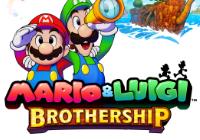
Following a renaissance for Mario RPGs with the recent revivals of Super Mario RPG and Paper Mario: The Thousand-Year Door, the one other series in this genre that more directly involves both plumber brothers sees a first original entry for many a year. Mario & Luigi: Brothership is helmed by Acquire, known lately for its work on Octopath Traveler II, and takes the mantle previously held by the now defunct AlphaDream.
It is debatable if Mario titles should ever be judged on story, but when it comes to role-playing games, whether it is Super Mario or Final Fantasy, it is this reviewer's opinion that the narrative has to be at least somewhat interesting enough to keep pushing forward through the adventure. Mario & Luigi: Brothership has some good things going for it, but the plot isn't one of them.
The opening is a somewhat strange event that sees Luigi fumbling in a bush, getting chased by bees, and being saved by Mario from falling off a cliff edge. Seemingly, the brotherly bond they have in that moment causes a vortex to erupt that transports them and other Mushroom Kingdom residents to the foreign land of Concordia in a scene reminiscent of The Super Mario Bros. Movie. There are many questions.
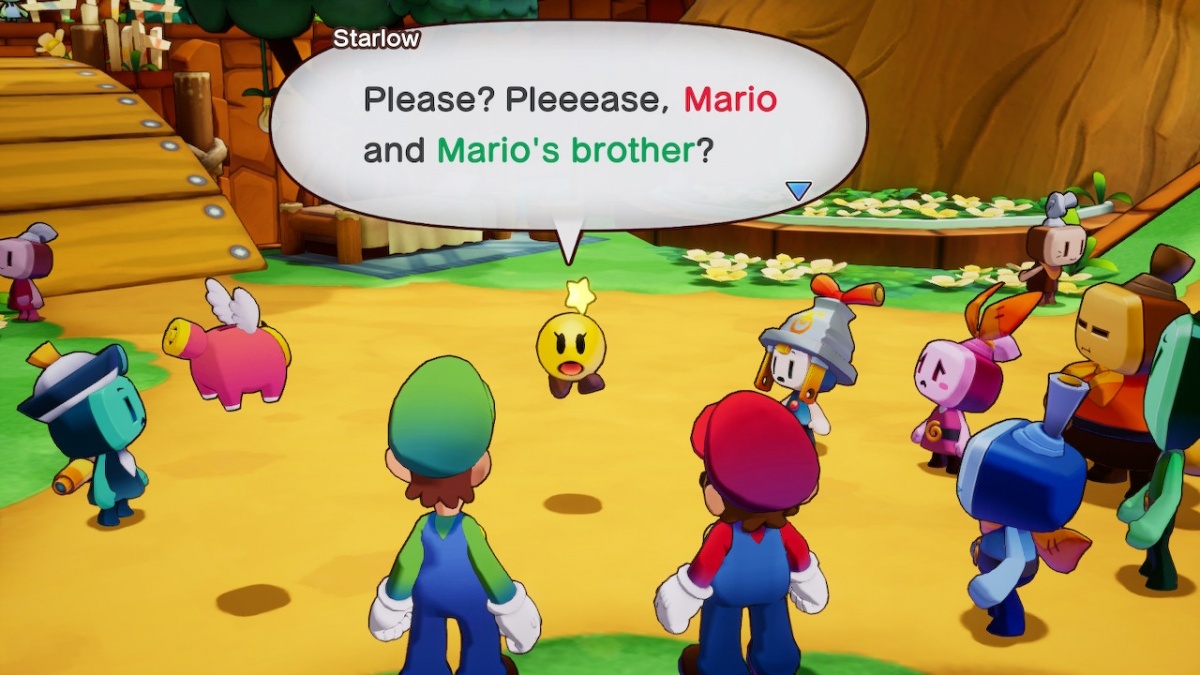
The first gameplay segment then begins, as Mario follows Luigi's voice and finally catches up with his greener, lankier brother on the sailing island of Shipshape. In this roughly five-minute act, most of the voice acting involves the two heroes exclaiming "Mario!" and "Luigi!" upwards of twenty times each, which must be some sort of record as far as Mario games go. The Italian-like gibberish of previous Mario & Luigi titles returns in various conversations, but the extremely limited speech for the pair does put into question whether Nintendo intends to really make better use of new Mario and Luigi voice actor Kevin Afghani.
Concordia's various land masses have been split up, and in this new world, it is up to the two brothers to steer Shipshape along different currents and reconnect each island back to the main source. Tying into the connection theme, these citizens resemble electrical plugs, sockets and connectors, and although there are some quirky designs and an overabundance of puns, these characters aren't as interesting as other unique races in the series. Unfortunately, even the enemies are somewhat bland, and the same ones reappear too often throughout the adventure.
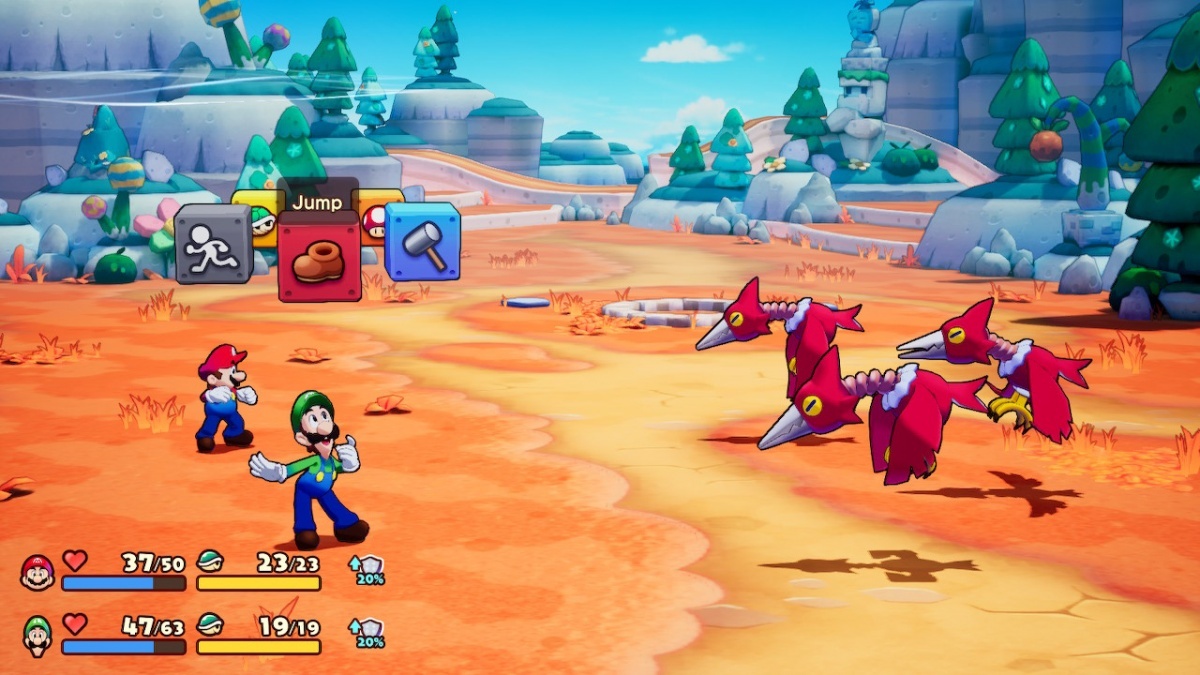
More immediately apparent, though, is the extremely appealing art style with its cartoony and cel-shaded look, and the absolutely brilliant animations that bring battles to life. There is no question that Mario & Luigi: Brothership's selling point is its turn-based encounters that encourage players to time their button presses accurately to deliver the most damage to foes, as well as to dodge and counter attacks.
This is no different to past Mario RPGs, but even after twenty hours, the combat's excitement stays pretty consistent and tactically engaging, as Mario and Luigi combine to launch each other into the air to stomp baddies or charge their hammers to crack skulls.
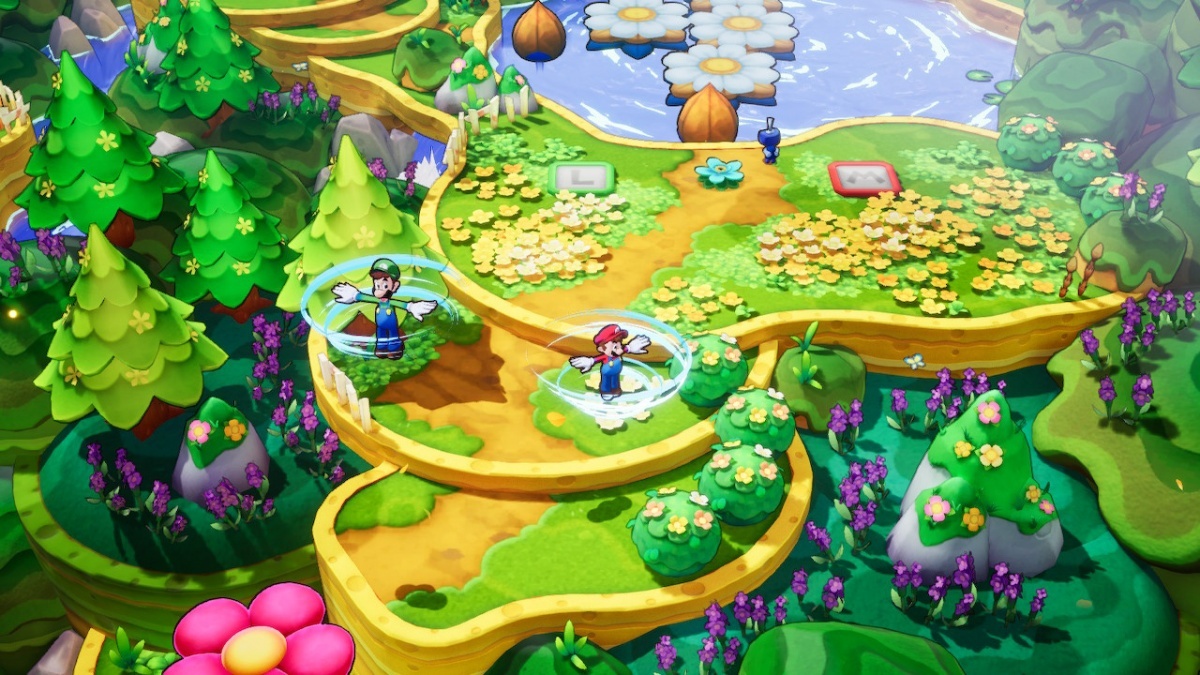
The special moves, in particular, are enjoyable to execute, whether it is passing Koopa shells back and forth before unleashing a Mario Strikers-like midair kick or playing volleyball with a Yoshi egg before the green dino himself busts out to ground pound enemies with an area of effect attack. It doesn't mean things don't get a touch repetitive here and there, but the unique nature of battles does require some focus that even other RPGs lack.
A bit of a sour point can be attributed to the levelling up and gear system, though, where certain boosters can be applied after reaching certain levels, with no way to undo the picks that are made. On the one hand, it does mean extra care needs to be taken and delivers an additional layer of thought before ploughing ahead, but there can be regret further down the line as the number of boosts that can be chosen is limited.
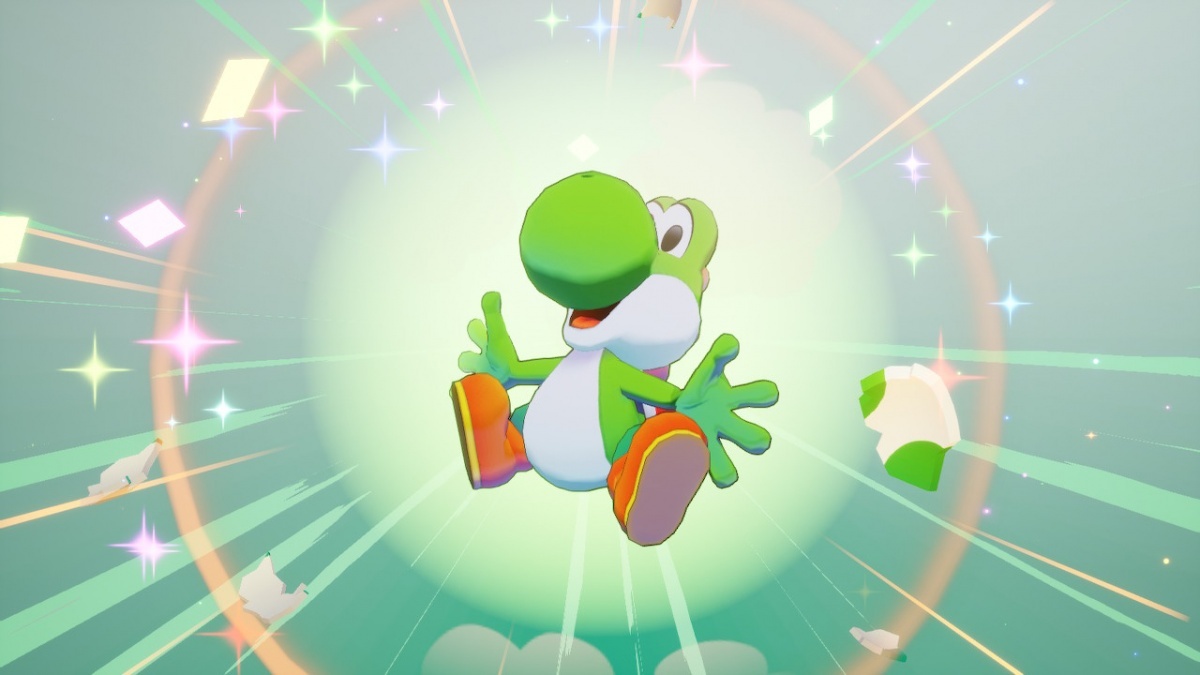
Upgrades include boosts to stats such as HP and speed, while others involve picking whether to increase the damage output of jump or hammer attacks. Mario and Luigi can equip gear that impacts their defence and attack power, but the ability to wear more than one accessory is also locked behind level-up upgrades, which is somewhat frustrating. There are some mixed feelings with this setup, but some players may relish the planning involved.
In contrast to previous Mario & Luigi games, and in an attempt to utilise Luigi in a comical and clever way, the gameplay concept "Luigi Logic" is introduced at random points throughout the quest. When the brothers run into certain obstacles, Luigi comes up with a scripted idea that must be activated in order to get through the upcoming section. This may involve him squeezing through the gap of a gate, magically flying high into the air to reach a higher platform, or hopping into a barrel to block the flashlights of guards so that Mario can safely pass.
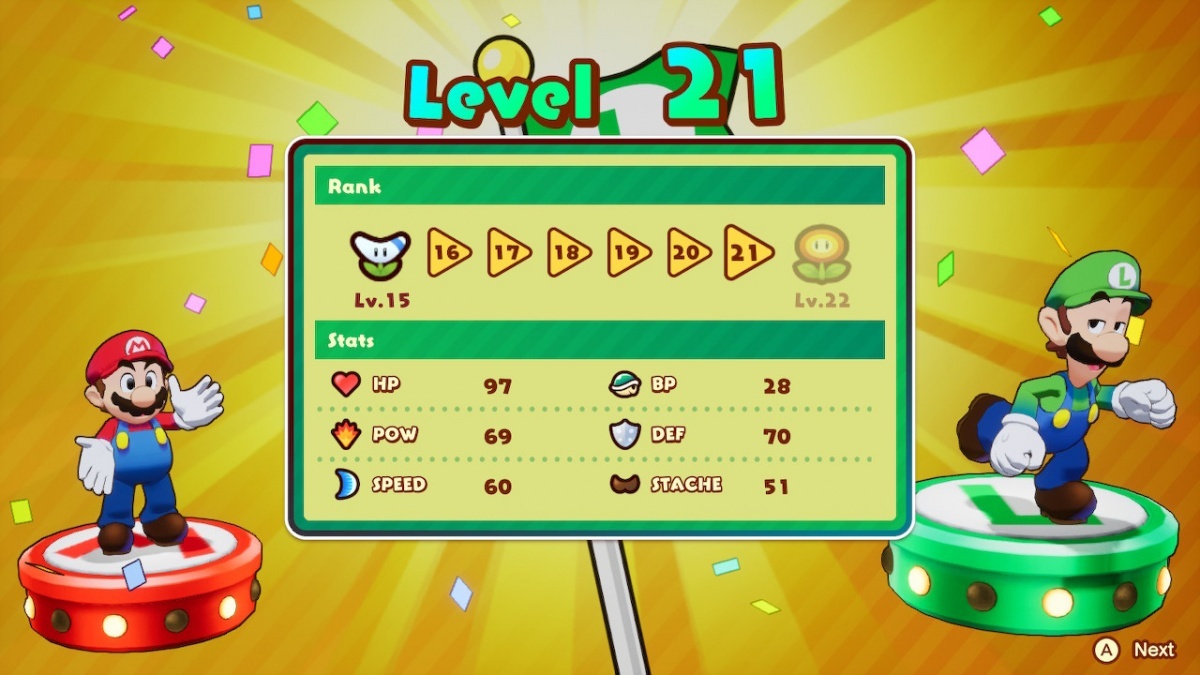
There doesn't seem to be much logic to Luigi Logic at all, though, as it makes you wonder why Luigi can suddenly perform these remarkable feats only in these situations and not in other places featuring the same obstacles. Control over Luigi is often limited, too, where Mario is the one still freely mobile, whereas Luigi resorts to simply jumping, whacking his hammer, or doing something else, often completely automated. It feels a little odd and isn't always executed in the best way.
Where Luigi Logic really shines, however, is within boss battles. These encounters are much more original than regular fights, as background elements in the arena come into play. Luigi may be able to use his special command at a certain point in the battle, and provided the player enters commands accurately, the boss can be stunned by the amusing effects of whatever Luigi conjures up, almost by accident. This is the moment to inflict as much damage to the boss as possible, before they break out of their dizzy spell. Boss battles are more entertaining as a result of this, whereas Luigi's alterations for his field map appearance over past games can be viewed negatively.
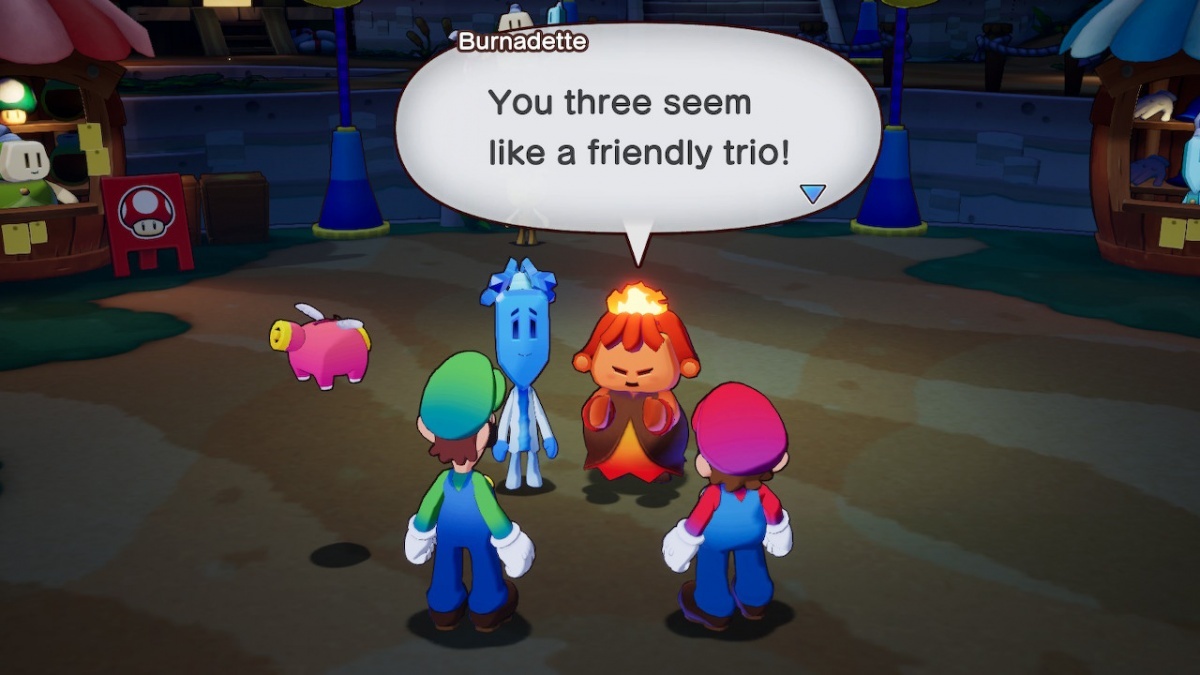
Mario & Luigi: Brothership stumbles further when it comes to its narrative and pacing. Mario RPGs usually have silly and humorous plots, but most of this title's jokes seem to rely heavily on puns and not a whole lot else. The idea of travelling to different islands and reconnecting them together sounds a fun concept, but the implementation isn't great, with generally tedious areas requiring some sort of mini plotline to be resolved to reach the lighthouse that must be activated in each region.
Dialogue can be overly wordy without much interesting to say, while playing detective and completing fetch quests, with most side quests revolving around such gameplay, isn't all that pleasing at all. The whole game starts to drag, and it sadly lasts far longer than it should do, with too much busywork between previous areas going on. A trimmed down, more focused adventure would have been much preferred, but some areas would have needed fleshing out with more originality.
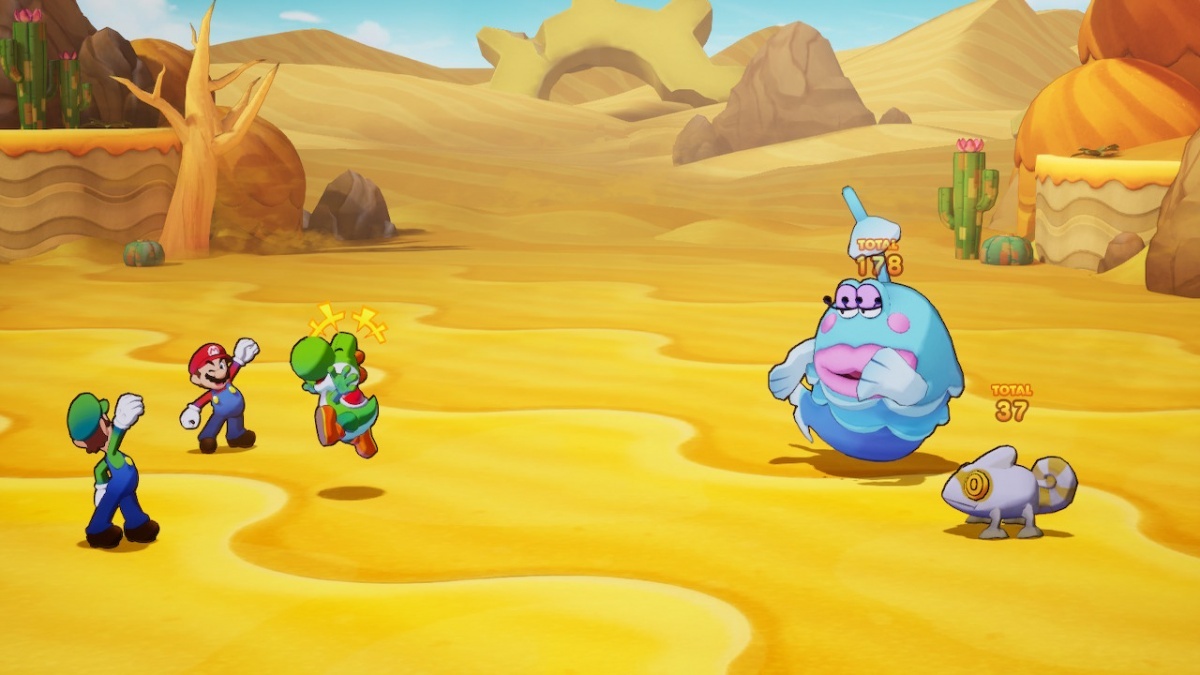
On the positive side, the soundtrack is undeniably fantastic, with each area's theme begging to be hummed along to. For the first time in the series, Yoko Shimomura doesn't compose the score, but Hideki Sakamoto instead steps in and has delivered brilliance that doesn't quite give the usual Mario vibes, but every track is still a belter.
It must once again be pointed out that the lack of accessibility options in this Nintendo game is shockingly poor, with the only thing in the Settings menu being the ability to turn the controller rumble feature on or off. It is bizarre that Nintendo struggles in this regard, because there are elements that should be allowed to be toggled or experimented with by the player, such as the size of the giant sea map in the top-left corner of the screen, and the annoying gibberish voices for most characters. At least the repeated cutscenes can be skipped.
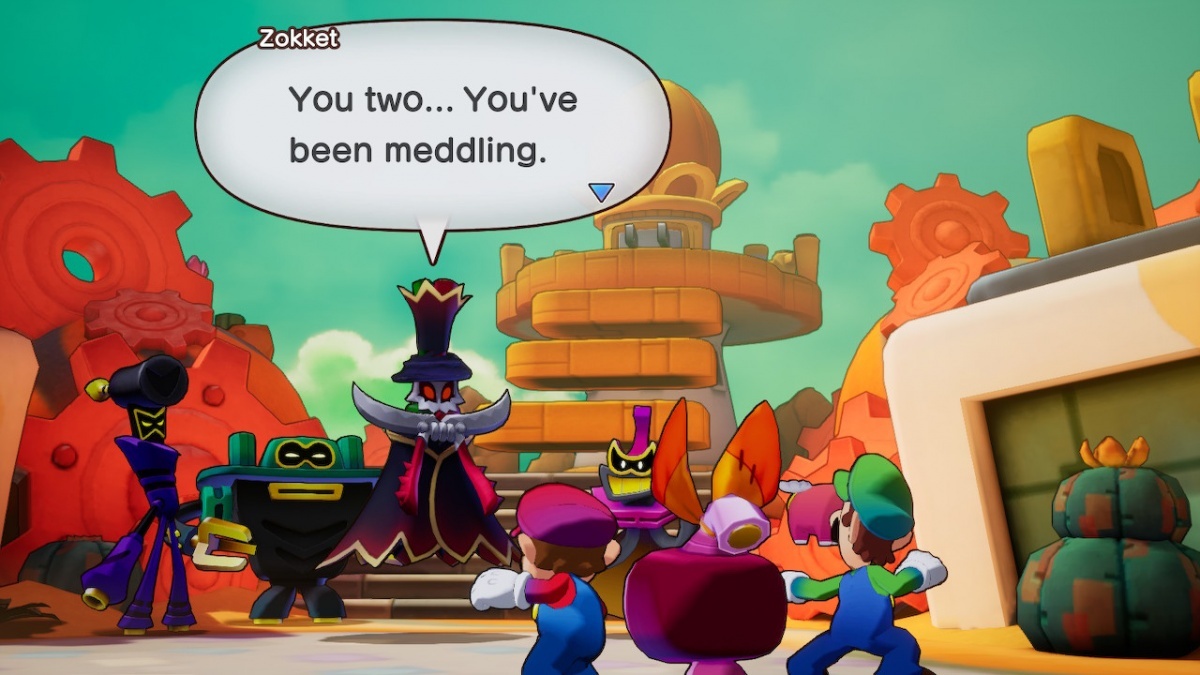
Cubed3 Rating
Good
By Mario RPG standards, this is not one of the better ones, particularly when it comes to the pacing, design, and story. What saves Mario & Luigi: Brothership from sinking completely is the strategically engaging and fun battle system, delightful animations that go hand-in-hand with the cartoony art style, and the excellent soundtrack. Other gameplay ideas miss their target, and things become a drag far too quickly.
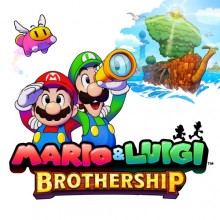
![]() 6/10
6/10
![]() 0
(0 Votes)
0
(0 Votes)
 Out now
Out now  Out now
Out now  Out now
Out now  Out now
Out now Comments
Comments are currently disabled

 Sign In
Sign In Game Details
Game Details Subscribe to this topic
Subscribe to this topic Features
Features






 Top
Top

